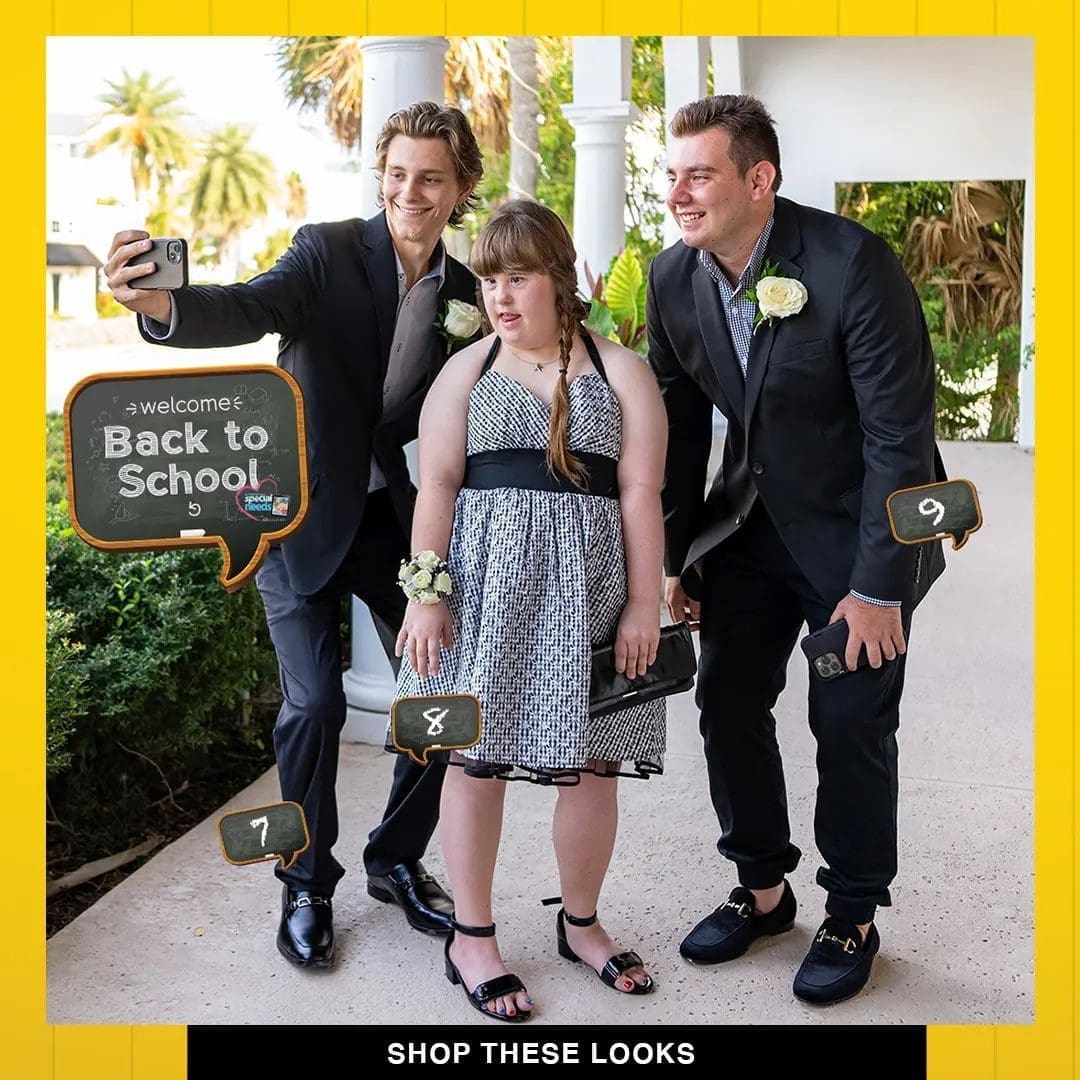Peer Buddy
Many students with disabilities can feel excluded from their school communities. In response, some schools have developed peer-buddy programs that aim to create more inclusive environments. A peer buddy is someone who is paired with students with disabilities in the classroom and serve as “buddies”. They are there to provide support with school work (working in small groups, responding to questions, summarizing key ideas, etc.), offer advice, and just be a friend.
Inclusion is enjoying a festive event together.
Click on the model’s name to find out what they’re wearing.
A BIG thank you to our models:
How do School Buddy Programs Benefit Kids?
Peer Buddy programs increase access for students with disabilities to both the general curriculum and to all of the activities of a typical school student. These programs promote friendships and relationships, development of
behavioral and social skills, better support of coursework, positive academic outcomes, can foster a greater sense of belonging and a more inclusive school community, and develop a more positive outlook on life for both buddies.
For the peer buddies, it not only increases their own awareness of students with disabilities, but also increases other students’ (who are not in the program) awareness of students with disabilities. It can further develop the peer buddies’ own social/emotional skills, be extremely motivating, and decrease their own attention-seeking behaviors within their general education setting. For the student with autism spectrum disorder, the program creates more naturalistic modeling opportunities, helps provide a chance to generalize skills, increases social-emotional and play skills, and generates an opportunity to form a bond with another student in the school that they see during transitions in the halls. (Jacqueline Dobres, MS, OTR/L, BCBA)
What is Reverse Inclusion?
Reverse Inclusion is a program of scheduled interaction with neuro-typical developing students from the general education population working with students with moderate to severe disabilities for an allotted period of time in a self-contained special education classroom.
Schools nationwide have been striving to implement additional mainstreaming and inclusion opportunities for students with autism spectrum disorder. Countless research has been conducted to support the benefit of inclusion for all students involved (i.e., special education students and general education peers). Typical inclusion settings are not always appropriate for all learners especially those in self-contained ABA classrooms. The development of peer buddy programs can help bridge that gap.
Best Buddies Organization
Best Buddies International is the world’s largest nonprofit 501(c)(3) organization dedicated to ending the social, physical and economic isolation of the 200 million people with intellectual and developmental disabilities (IDD). Best Buddies envisions a world where people with IDD are so successfully integrated into schools, workplaces and communities that its current efforts and services will be unnecessary.
Until that vision becomes a reality, this dynamic and growing organization will continue to empower the special abilities of people with IDD by helping them form meaningful friendships with their peers, secure successful jobs, live independently, improve public speaking, self-advocacy and communication skills, and feel valued by society. Best Buddies serves, but is not limited to, people with Down syndrome, autism, Fragile X, Williams syndrome, cerebral palsy, traumatic brain injury and other undiagnosed disabilities.
Learn more about:
Inclusion [7]
Classrooms [9]
Peer-Buddy Programs [10]
More Inclusion
- Inclusion: Why It Matters? [11]
- Inclusive Bathrooms: Let’s Start Talking About It [12]
- Top 10 Parks Worth Playing At: Inclusive Parks where Everyone can have Fun! [13]
Helpful Articles
- Tips for Inclusion and Friendship [14]
- From Social Skills to Social Thinking [15]
- Eight Key Design Issues for Special Needs Environmental Design [16]
- Why Biophilic Design Can Benefit People with Special Needs [17]
- How to support REAL friendships with your child and their typical classmates? [18]
- Communication and Connecting are Gifts to be Celebrated! [19]
- Friends of Brian: Achieving Quality of Life Through GAP [20]
- More Than Friends: Sammy Callari and Parker Seward [21]
- Special Olympics Is Truly Special and Much More Than Just Sports [22]
- Shining a Light on Sunflower Bakery Presented by Bus 52 [23]
- Peaceful Fruits: Paving The Way for Socially Good Partnerships [24]
- Celebrities with Disabilities that Turned their Dreams into Attainable Goals [25]
- Fitness Activities: A Gateway Towards Introducing Social Skills [26]
This post originally appeared on our July/August 2022 Magazine [27]



